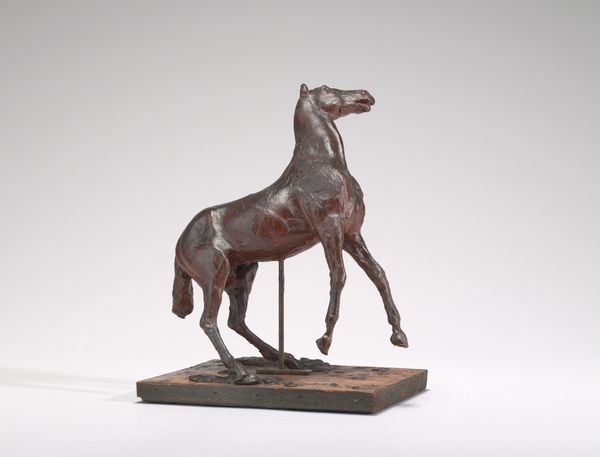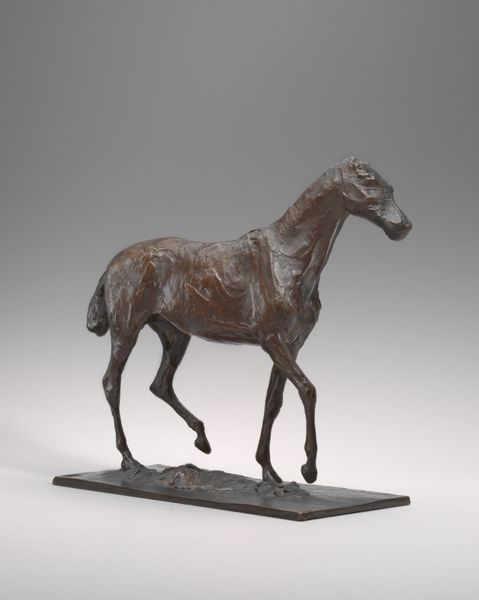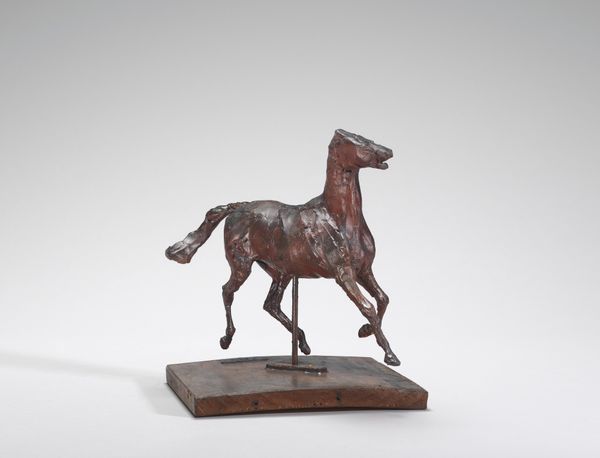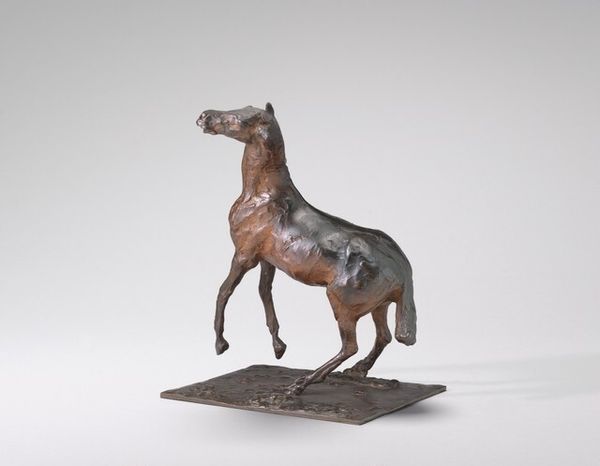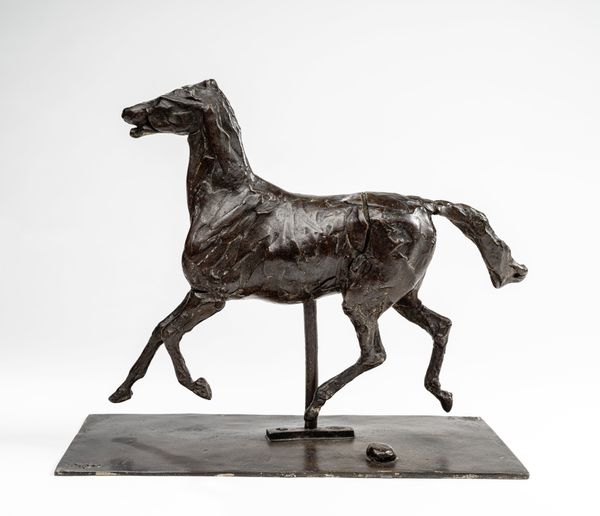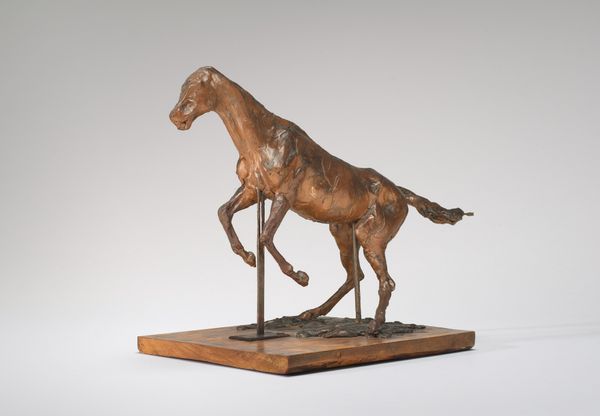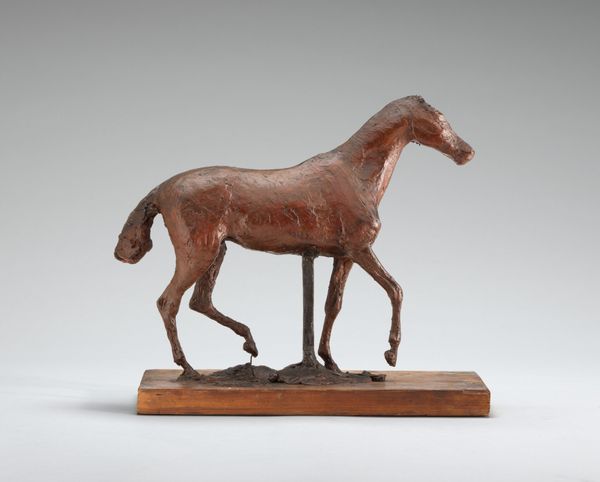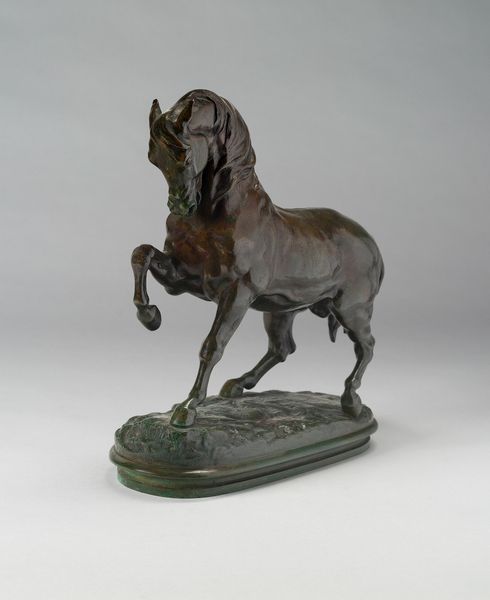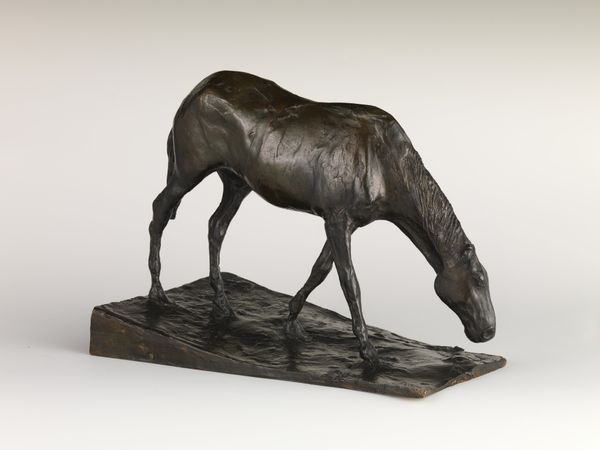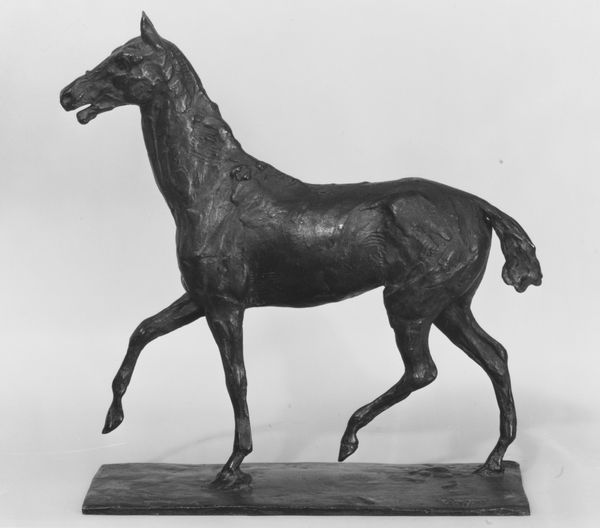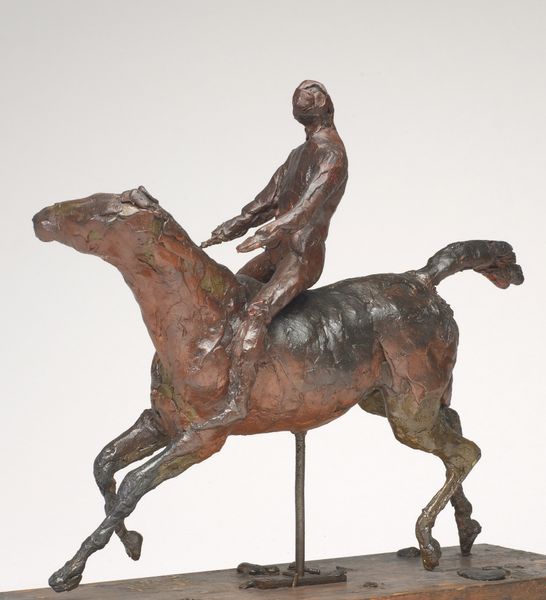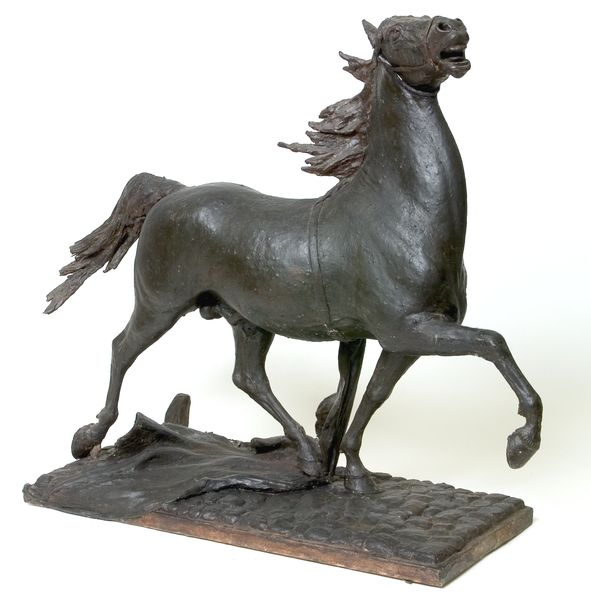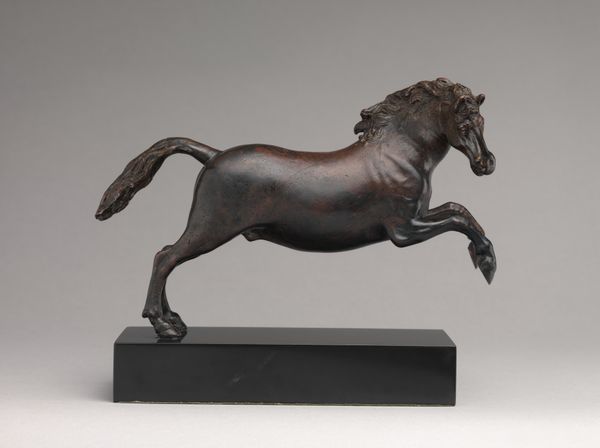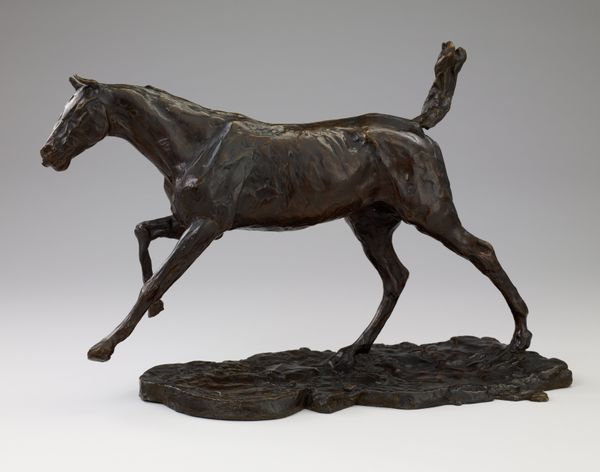
Dimensions: overall with base: 22.2 x 12.5 x 27.8 cm (8 3/4 x 4 15/16 x 10 15/16 in.) height without base (of horse): 21.6 cm (8 1/2 in.)
Copyright: National Gallery of Art: CC0 1.0
Editor: Here we have Edgar Degas' bronze sculpture, "Horse Trotting, the Feet Not Touching the Ground," created sometime between 1870 and 1924. I'm struck by its raw energy. The texture of the bronze makes the horse look like it's bursting with motion, even though it's frozen in time. How do you interpret the visual symbolism in Degas' depiction of the horse? Curator: The horse, of course, carries a weighty cultural load. For centuries, it's symbolized power, freedom, and even nobility. In Degas' time, the horse was also linked with modernity, with racing becoming increasingly popular. What is interesting here is to note the seemingly suspended animation, and it invites us to meditate on speed and time, specifically the rapidly changing world and the human effort to capture transient moments. What emotions does its kinetic quality evoke in you? Editor: It's thrilling but also a little unsettling, maybe because it feels so precarious, like the horse could fall at any moment. The Impressionists were preoccupied with trying to freeze moments, as you suggested, and with motion--so a horse mid-stride would be just the subject. But why bronze? It feels weighty for such a fleeting thing. Curator: Ah, an excellent observation. The solidity of the bronze, against the ephemerality of the captured movement, underscores the struggle to make permanent something inherently transient. It reminds us, perhaps, of the tension between the classical desire for permanence and the modern fascination with fleeting sensations. Think about the echoes of classical equestrian statues, transformed and almost contradicted by Impressionistic values. Editor: That makes a lot of sense. It is like Degas wanted to show all aspects of what the horse represented. I hadn't considered that connection to classical sculpture. Curator: Visual symbols are never isolated, but always layered with historical memory and the artist's particular interpretation. It shows how impactful the past and present play with our perceptions.
Comments
No comments
Be the first to comment and join the conversation on the ultimate creative platform.
